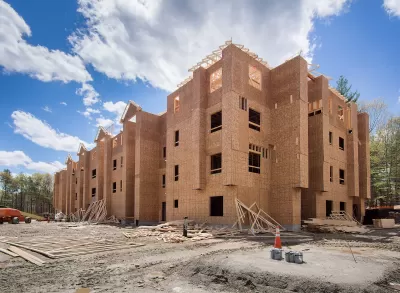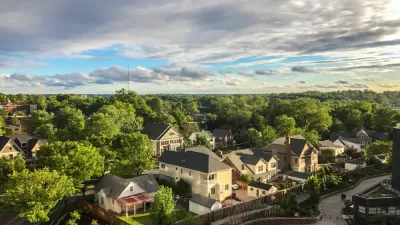A combination of ineffective funding mechanisms, strict building regulations, and inflation are pushing per-unit construction costs higher.

Writing in Crain’s Chicago Business, Judith Crown explains the various factors behind the high cost of affordable housing construction.
According to Crown, “Costs are driven by the byzantine rules of the federal tax credit system that require builders to assemble a ‘capital stack’ of funders, each with sets of fees and requirements. On top of that comes ever more rigorous government standards for accessibility, sustainability and design.”
Additionally, federal resources dedicated to affordable housing have not kept up with inflation, and the complex tax credit funding system comes with “incredibly high transaction costs.” Some experts say it would cost far less if the federal government directly subsidized affordable housing construction.
Per-unit costs sometimes increase due to the addition of new infrastructure, but improvements such as new sidewalks can help make a housing development a vehicle for broader revitalization in the surrounding neighborhood. Modern affordable housing is also designed to blend in. “Planners want to get away from the institutional design of infamous public housing projects, such as the Robert Taylor Homes and Cabrini-Green. While these 1960s-era buildings aren't directly comparable to today's scaled-down affordable projects, there's a priority to design buildings that look like they're part of the neighborhood, architects say.”
FULL STORY: The high cost of creating affordable housing

Alabama: Trump Terminates Settlements for Black Communities Harmed By Raw Sewage
Trump deemed the landmark civil rights agreement “illegal DEI and environmental justice policy.”

Planetizen Federal Action Tracker
A weekly monitor of how Trump’s orders and actions are impacting planners and planning in America.

The 120 Year Old Tiny Home Villages That Sheltered San Francisco’s Earthquake Refugees
More than a century ago, San Francisco mobilized to house thousands of residents displaced by the 1906 earthquake. Could their strategy offer a model for the present?

Opinion: California’s SB 79 Would Improve Housing Affordability and Transit Access
A proposed bill would legalize transit-oriented development statewide.

Record Temperatures Prompt Push for Environmental Justice Bills
Nevada legislators are proposing laws that would mandate heat mitigation measures to protect residents from the impacts of extreme heat.

Downtown Pittsburgh Set to Gain 1,300 New Housing Units
Pittsburgh’s office buildings, many of which date back to the early 20th century, are prime candidates for conversion to housing.
Urban Design for Planners 1: Software Tools
This six-course series explores essential urban design concepts using open source software and equips planners with the tools they need to participate fully in the urban design process.
Planning for Universal Design
Learn the tools for implementing Universal Design in planning regulations.
Clanton & Associates, Inc.
Jessamine County Fiscal Court
Institute for Housing and Urban Development Studies (IHS)
City of Grandview
Harvard GSD Executive Education
Toledo-Lucas County Plan Commissions
Salt Lake City
NYU Wagner Graduate School of Public Service




























